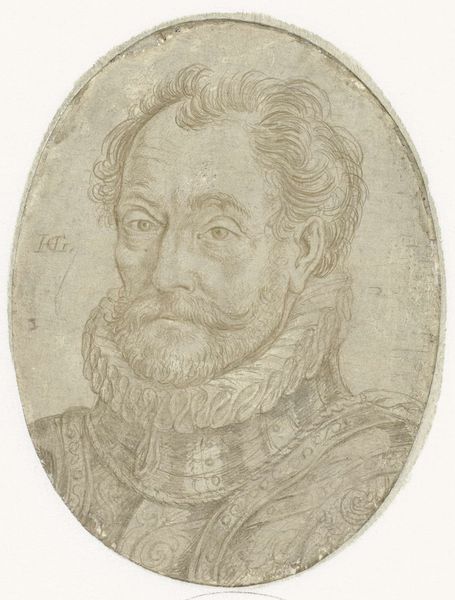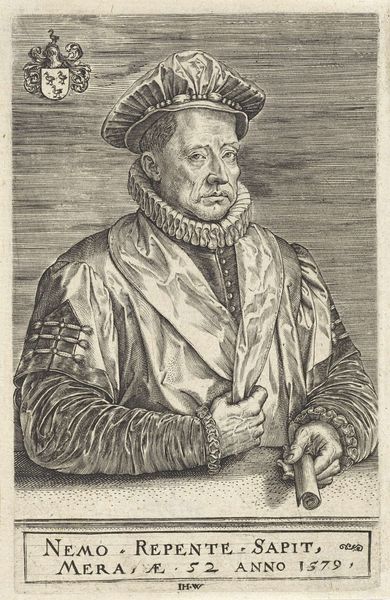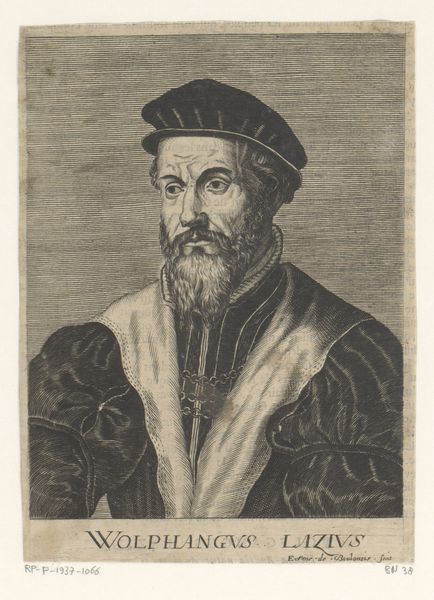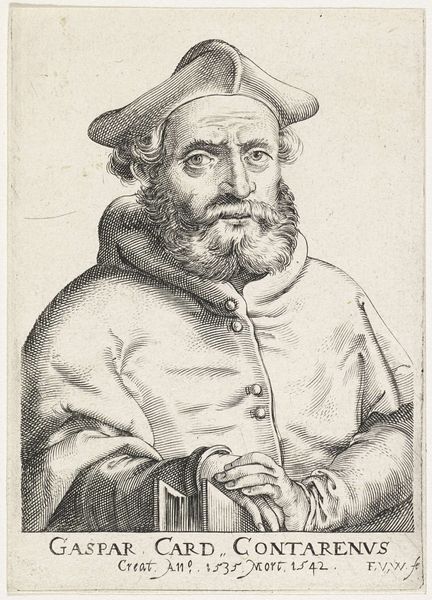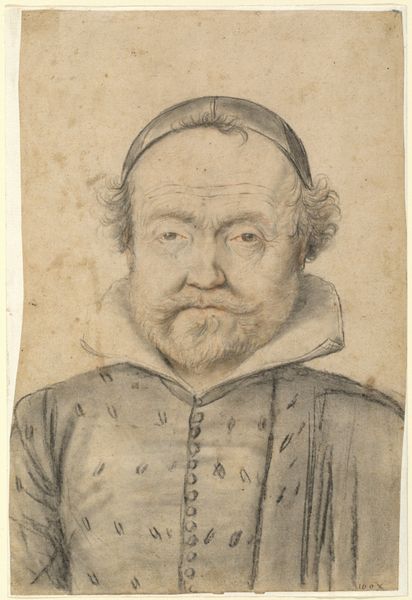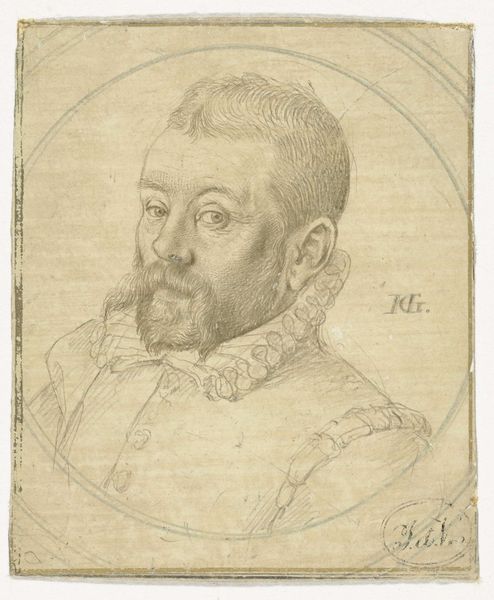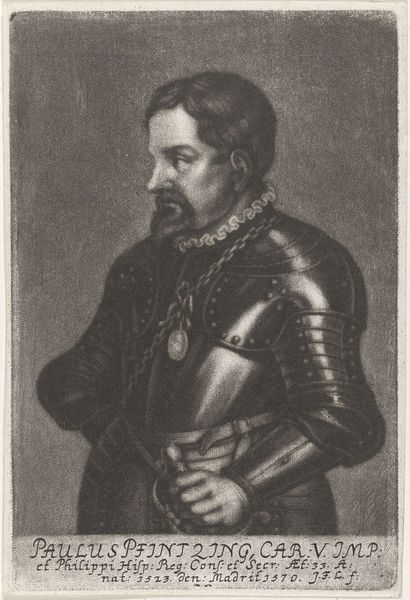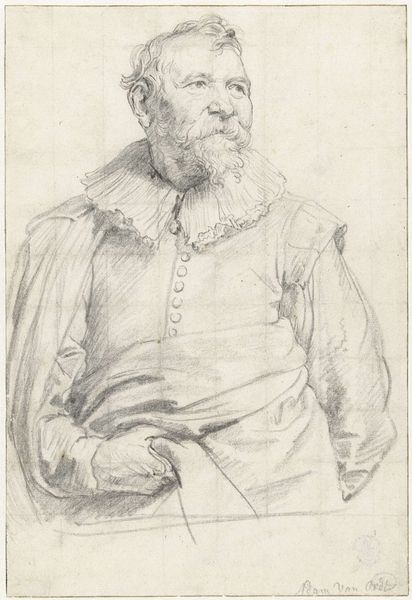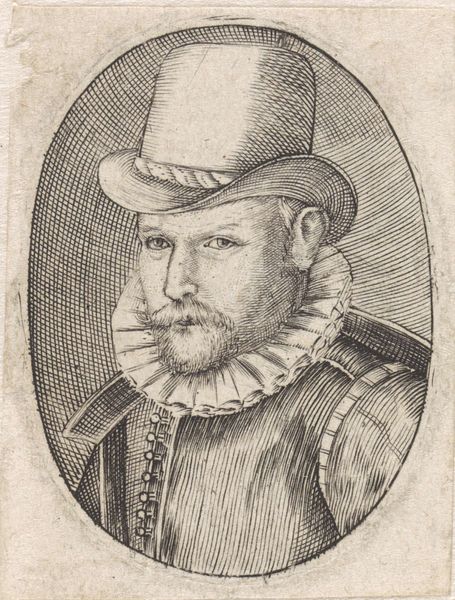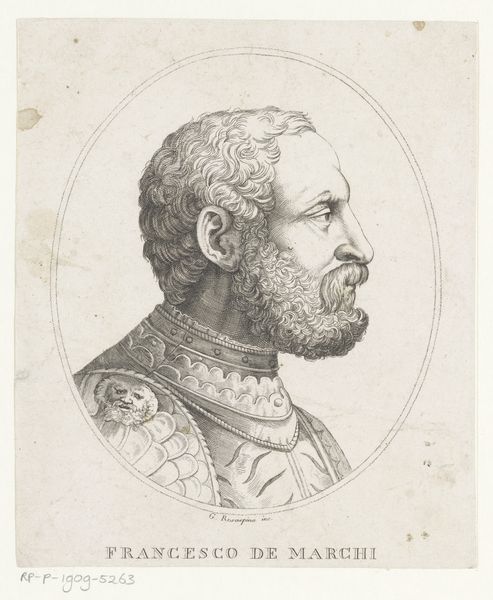
drawing, print, engraving
#
portrait
#
drawing
#
baroque
# print
#
pencil drawing
#
portrait drawing
#
engraving
#
portrait art
Dimensions: height 189 mm, width 126 mm
Copyright: Rijks Museum: Open Domain
Curator: Looking at this engraving, dating probably from the mid-17th century, you immediately notice a certain directness, a lack of baroque fussiness. It’s by Hendrick Danckerts, titled "Portret van jonge man met baret," or "Portrait of a young man with a beret". Editor: It has a remarkable calmness. There’s an interesting combination of intensity in the eyes but also this stillness in the rest of the face. The shading, though limited by the print medium, gives such a palpable sense of volume to the head and beard. Curator: Danckerts' style, very typical for that period, involves meticulously layering lines. The even hatching in the background contrasts sharply with the varying weights in the lines defining his face and clothes. Those lines almost give a textile quality, don't they? Editor: Definitely. This careful orchestration of line weight seems designed to capture not just physical resemblance, but also some aspect of the sitter's inner life. It’s fascinating to consider the power dynamic between artist and sitter within that social context. Who *was* this young man? Curator: Precisely! Portraits were powerful conveyors of status and character in 17th-century society, especially amongst the rising merchant classes. I think his clothes here signify wealth and possibly also taste, but there are no overt status symbols – just that beret that would denote an educated man. The beret echoes a much older tradition, of course. Editor: So, this portrait is an exercise in subtle self-presentation through recognizable codes, a way to participate in a discourse of identity. It almost renders the background irrelevant. The man truly fills the pictorial space. Curator: I see it as a carefully constructed image of a particular social ideal. His gaze seems very intentional, it addresses us directly. He is presented to us – but also for posterity. Editor: And through the reproduction allowed by printmaking, this image and this idea of identity would spread far wider than just one painted portrait could achieve. Curator: That democratization of access is a key piece. Printmaking facilitated a broader visual literacy across society, influencing notions of personhood itself. A simple engraving became quite influential. Editor: And it allows us now, centuries later, to ponder that impact. Thanks for walking us through. Curator: A pleasure. I do believe, images of self can be truly world-shaping in cultural and personal memory.
Comments
No comments
Be the first to comment and join the conversation on the ultimate creative platform.

